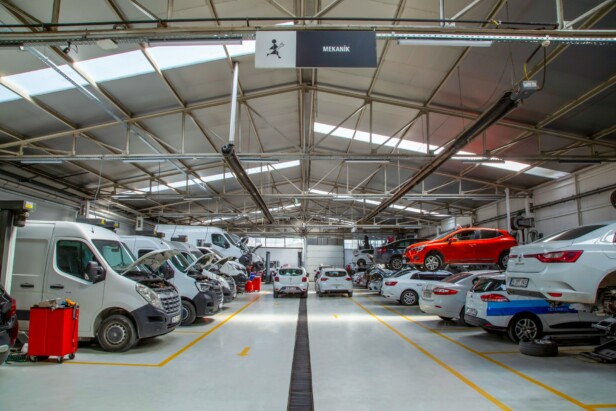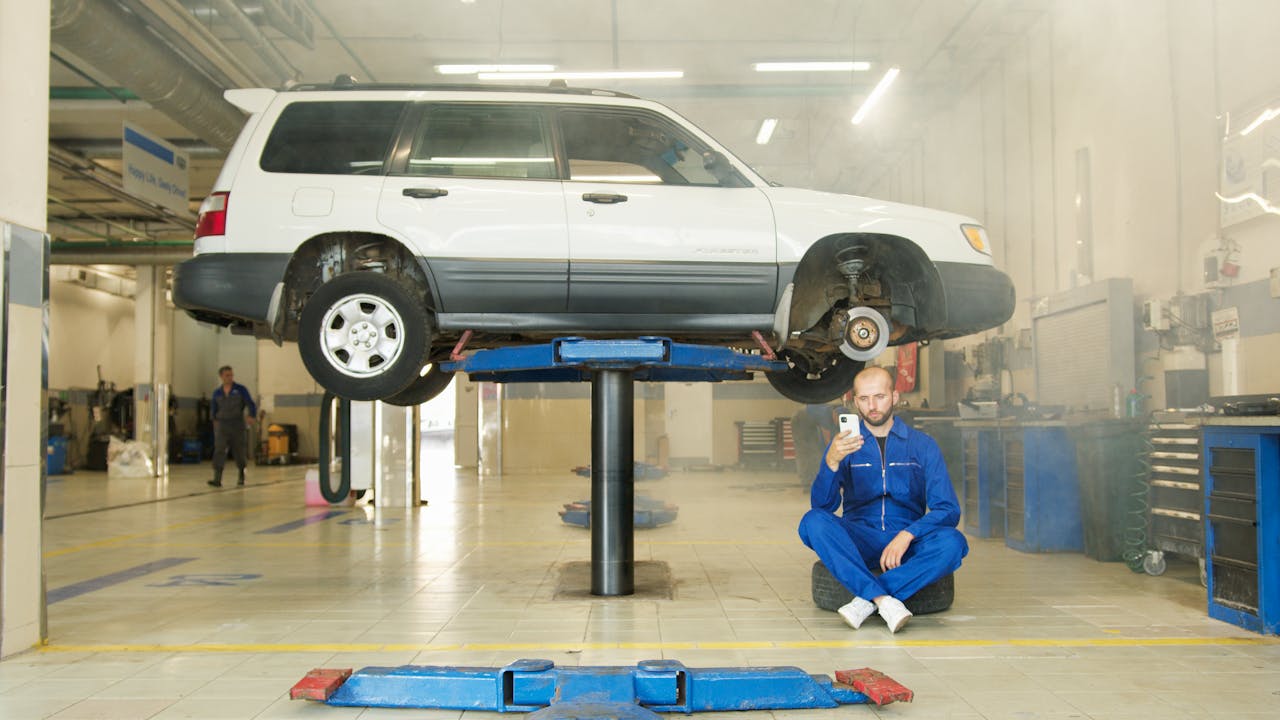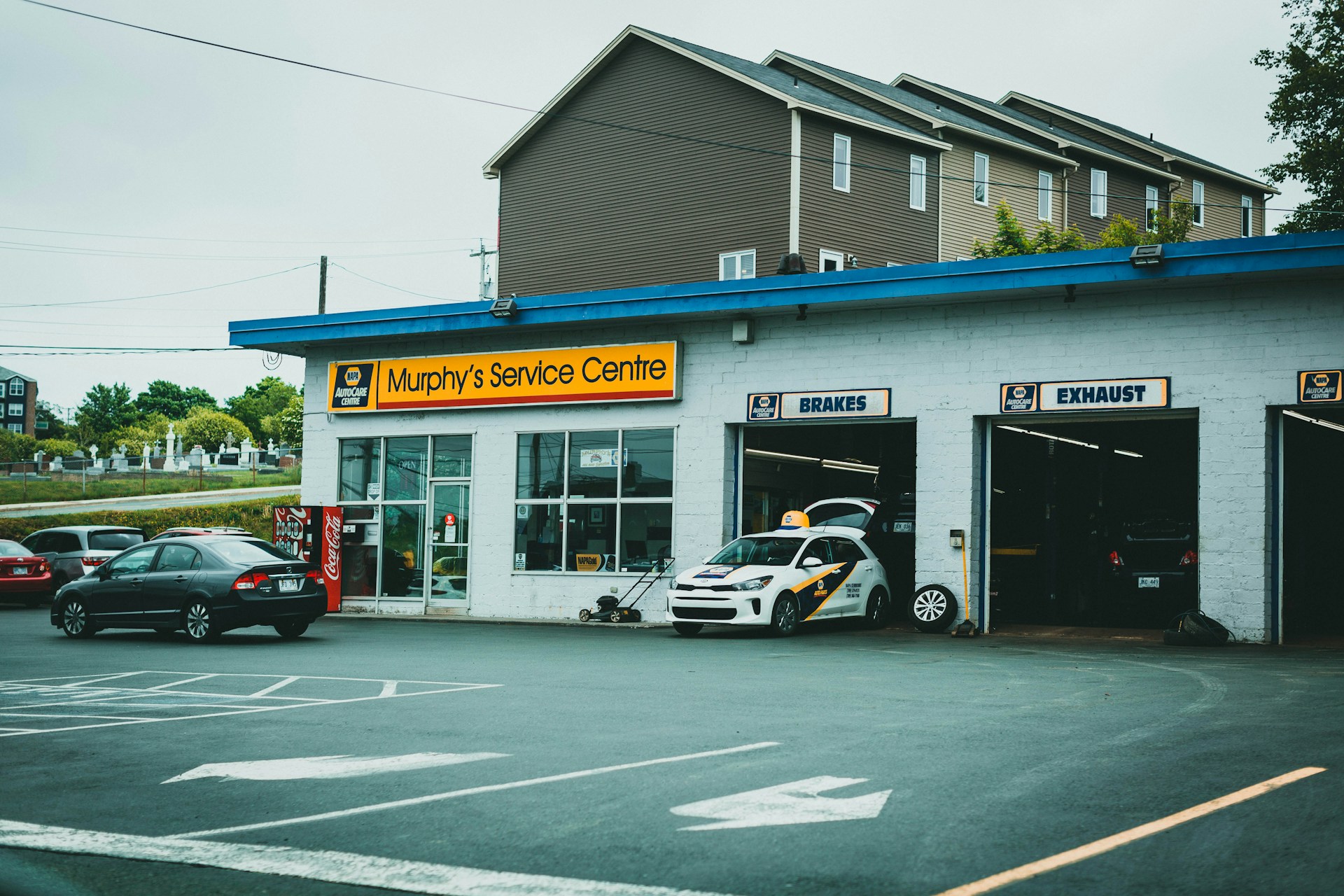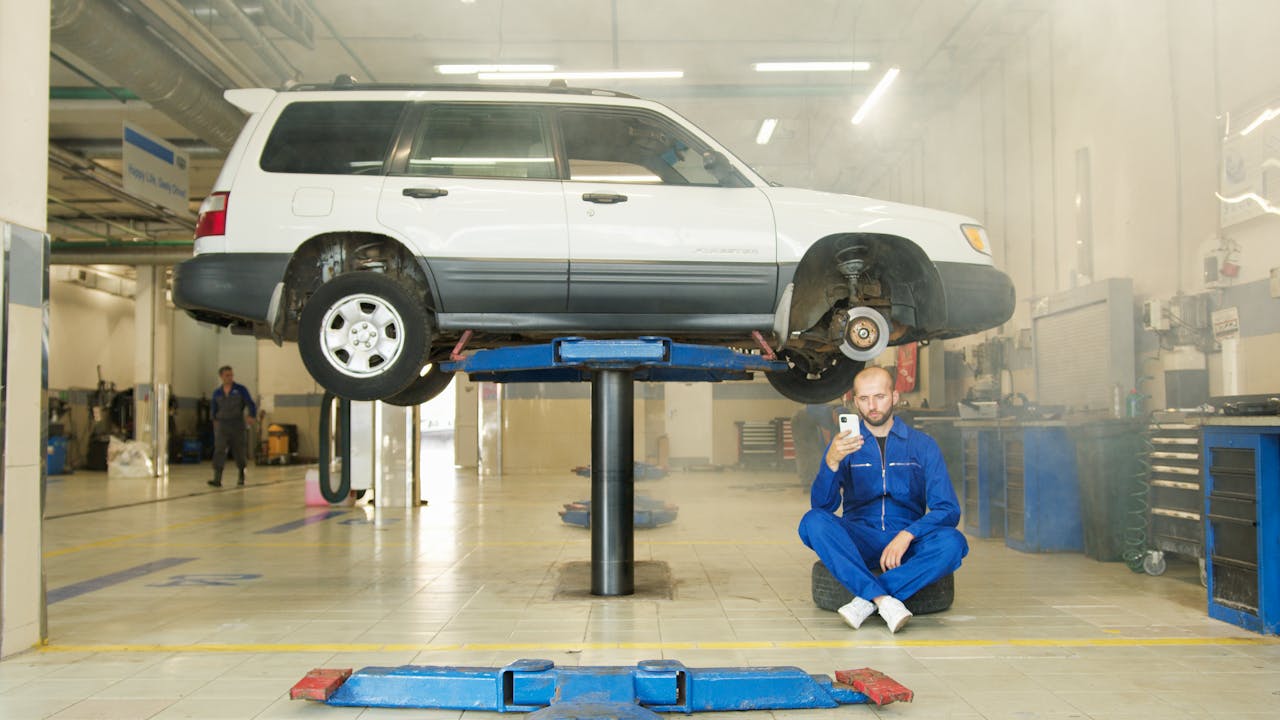Opening an automotive repair facility requires navigating Austin’s complex zoning framework. The city’s automotive shop zoning regulations determine which districts permit auto-related uses and establish specific development standards for each location.
Austin’s zoning system organizes automotive uses through permitted rights, conditional approvals, and overlay restrictions that can significantly alter what’s allowed on any given parcel. Understanding these regulations prevents costly project delays and ensures compliance with the Land Development Code from project inception.
Which Austin Zoning Districts Allow Automotive Shops, And How?
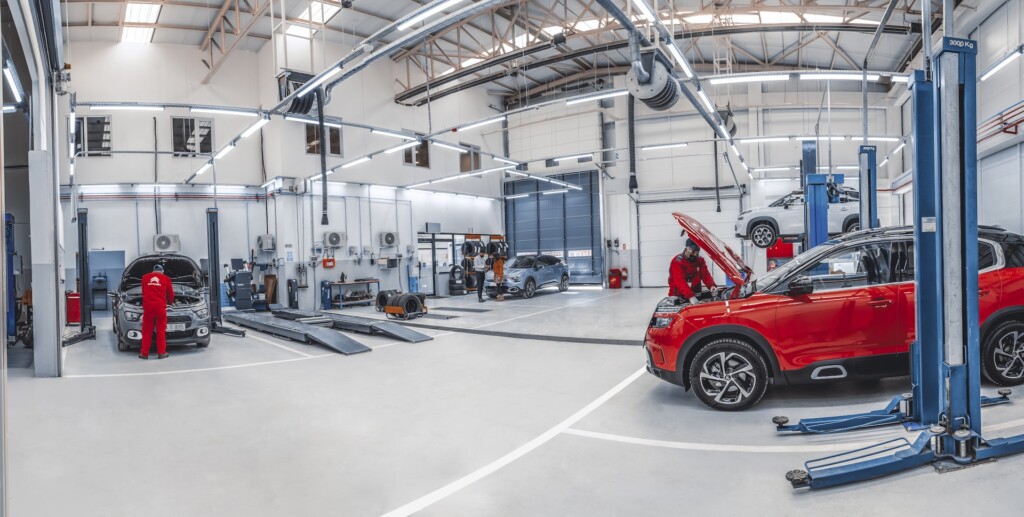
Austin’s zoning districts treat automotive shops differently based on their intended use and development patterns. We organize districts into three categories based on how they handle automotive rentals, repair services, sales, and washing facilities.
By-Right Allowances
Several commercial and industrial districts permit automotive uses without additional approvals. Community Commercial (GR) districts allow the full range of automotive uses as permitted uses: automotive rentals, automotive repair services, automotive sales, and automotive washing of any type.
General Commercial Services (CS) and Commercial-Liquor Sales (CS-1) districts mirror GR permissions for automotive uses. CS-1 adds liquor-related businesses to its use list while excluding certain non-automotive testing services that CS permits.
Commercial Highway (CH) districts accommodate automotive rentals, repair, sales, and washing as permitted uses. These districts typically develop along major roadways where automotive businesses naturally cluster.
Industrial districts provide strong support for automotive operations. Limited Industrial Service (LI), Industrial Park (IP), and Major Industry (MI) all permit automotive rentals, repair, and sales by right. LI and MI districts also allow automotive washing of any type, while IP has more limited washing permissions.
Conditional Or Limited Allowances
Some districts allow automotive uses but require conditional approval through the city’s review process. Central Business District (CBD), Downtown Mixed Use (DMU), and Lake Commercial (L) typically require conditional approval for automotive rentals, repair, sales, and washing.
Research & Development (R&D) districts present unique challenges for automotive shops. Automotive repair services and other commercial uses may require specific approvals under R&D performance standards, making these locations less predictable for automotive development.
More Restrictive Districts
Certain districts either restrict or don’t accommodate typical automotive shop operations. Neighborhood Commercial (LR) districts don’t list automotive repair or sales among permitted or conditional uses. However, these districts do allow service stations as a distinct use category.
Warehouse/Limited Office (W/LO) districts focus on storage and limited office functions. These districts don’t include automotive rentals, repair, sales, or washing among their permitted uses, making them unsuitable for most automotive operations.
Remember that individual sites remain subject to their exact zoning code and any overlays that may modify these base district permissions. We recommend confirming specific allowances before proceeding with site selection or development planning.
What Site Development Standards Matter For An Automotive Shop Build?
When we evaluate potential sites for automotive construction projects, the base zoning district dictates fundamental limits on building dimensions and site coverage. Height restrictions, floor-to-area ratios, and impervious surface allowances directly affect project feasibility and cost analysis during early design phases.
GR (Community Commercial) districts typically offer balanced development parameters for automotive uses. The 60-foot height limit accommodates most service bay configurations, while the 1:1 FAR provides adequate building footprint for typical shop operations. With 90% impervious cover allowed and 75% building coverage, these districts support the hardscape requirements automotive facilities demand for customer parking and vehicle staging areas. Front and street side setbacks of 10 feet create minimal buffer requirements that rarely complicate site planning.
CS (General Commercial Services) districts present more intensive development opportunities. The same 60-foot height restriction applies, but the 2:1 FAR doubles the potential building square footage compared to GR zones. Maximum impervious cover reaches 95%, with building coverage matching that threshold. This combination allows for larger service facilities or multi-story office components while maintaining the standard 10-foot front and street side setbacks.
LI (Limited Industrial Service) zones offer different trade-offs for automotive development. Height remains capped at 60 feet with FAR limited to 1:1, similar to GR districts. However, impervious cover drops to 80%, requiring more thoughtful site design to balance operational needs with drainage requirements. Building coverage returns to 75%, while setback requirements follow general code provisions rather than specific distances.
These numerical limits translate directly to construction costs and operational efficiency. Higher impervious cover percentages reduce landscaping requirements but may trigger enhanced stormwater management systems. Floor-to-area ratios determine whether service bays, customer areas, and administrative functions can be accommodated within a single structure or require multiple buildings.
Watershed regulations frequently impose stricter limits than base zoning allows. Areas within the Barton Springs Zone or other sensitive watersheds may face reduced impervious cover limits, increased setback requirements, or mandatory green infrastructure. Neighborhood compatibility standards can also override zoning maximums, particularly regarding building height and screening requirements adjacent to residential uses.
We always verify the complete regulatory framework affecting each site before finalizing construction budgets. Base zoning provides the starting framework, but overlays, environmental restrictions, and compatibility requirements often prove more constraining than the underlying district standards.
How Can Overlays, Neighborhood Plans, Or PDAs Change What’s Allowed For Auto Uses?
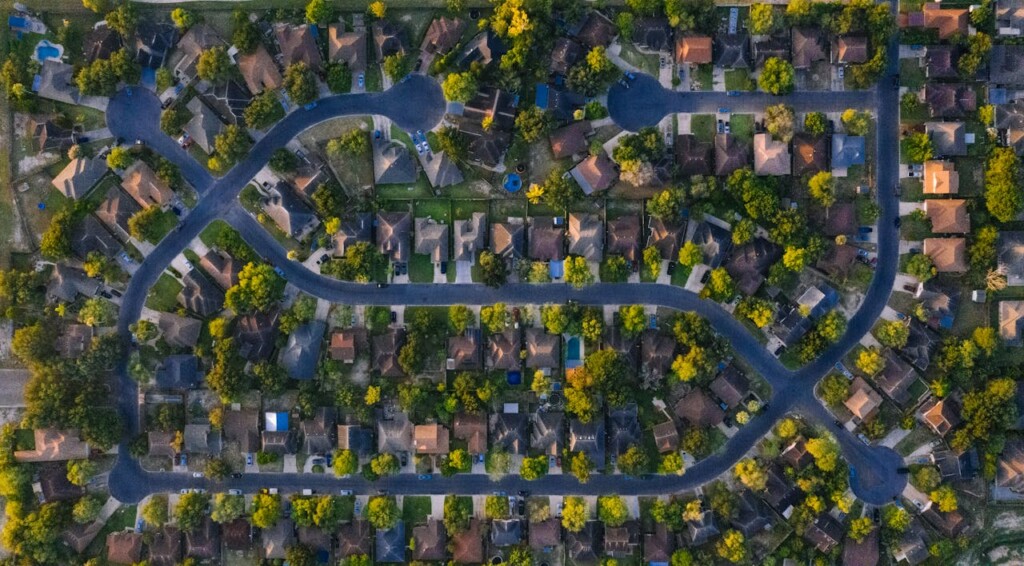
Base zoning serves as the foundation for automotive shop regulations, but it tells only part of the story. Overlays, neighborhood plans, and planned development areas can fundamentally alter what automotive uses are allowed on a parcel, even when the base district would normally permit them.
Conditional Overlays Add Restrictions
Conditional Overlays (-CO) typically impose more restrictive standards than base zoning. These overlays may prohibit otherwise permitted uses, which can block automotive facilities entirely from specific parcels. They often increase required setbacks beyond base district minimums, potentially constraining building placement and site access for service bays.
Use restrictions through conditional overlays can extend beyond simple prohibitions. Height and floor-to-area ratio limits may be reduced below base district allowances, affecting the scale of potential automotive facilities. Buffer requirements frequently increase between automotive uses and adjacent properties, particularly when zoning transitions occur.
Neighborhood Plans Shape Development Patterns
Neighborhood Plan (-NP) designations modify base zoning standards area-wide, often reflecting community input and long-range planning goals. These plans may introduce infill development incentives that encourage smaller-scale automotive services while restricting larger operations. Design standards within neighborhood plans can specify architectural requirements, signage limitations, and operational parameters that affect automotive shop feasibility.
Performance standards embedded in neighborhood plans address operational concerns like noise, traffic patterns, and environmental impacts. We often see restrictions on hours of operation, limits on outdoor storage, and requirements for enhanced screening when automotive uses adjoin residential areas.
Planned Development Areas Create Custom Rules
Planned Development Areas (-PDA) represent the most tailored approach to zoning modification. PDAs can completely rewrite the rules for allowed uses and site regulations within defined boundaries. These areas may permit automotive uses under specific conditions not found in base zoning, or conversely, prohibit them entirely despite base district allowances.
Site-specific rules in PDAs often address unique geographic or infrastructure constraints. Drainage requirements, access limitations, and compatibility standards may differ significantly from both base zoning and standard overlays, requiring careful analysis during site evaluation.
Real-World Impact On Automotive Uses
A recent Austin ordinance demonstrates how overlays can override base zoning permissions for automotive facilities. In 2024, an LI-PDA-NP designation specifically prohibited Automotive Rentals, Automotive Repair Services, Automotive Sales, and Automotive Washing within its boundaries. This prohibition applied despite the Limited Industrial Service base district normally allowing these automotive uses by right.
The ordinance illustrates how PDAs and neighborhood plans work together to restrict uses that would otherwise be permitted. Property owners and developers must examine not just base zoning but all applicable overlays and special designations when evaluating automotive shop potential. Each layer of regulation can modify or eliminate base district permissions, making parcel-specific research essential for accurate feasibility assessment.
Conclusion And Next Steps

Understanding automotive shop zoning regulations in Austin requires navigating multiple layers of requirements that can significantly impact where and how we build these facilities. We work with developers and property owners to identify the most suitable districts early in the planning process, focusing primarily on GR, CS, CH, LI, IP, and MI districts where automotive repair services operate by right. These districts provide the foundation for successful automotive shop development, offering the necessary site development standards and use permissions.
The complexity increases when conditional approvals come into play. Districts like CBD, DMU, L, and R&D often require additional approvals through Planning Commission or City Council processes, extending project timelines but still providing viable paths forward. We coordinate these approval processes while ensuring compliance with height restrictions, floor-to-area ratios, impervious cover limits, and setback requirements that vary significantly between districts. Overlays such as conditional overlays, neighborhood plans, and planned development areas can fundamentally alter what appears permissible under base zoning, making thorough due diligence essential before any construction commitment.
For your next automotive shop project, start by using Austin’s Development Web Map to verify current zoning and request a zoning verification letter from the Development Assistance Center for official confirmation. If conditional approvals or rezoning become necessary, prepare for public hearings and neighbor notification processes that can influence project approval.
Contact EB3 Construction to navigate Austin’s automotive shop zoning requirements and ensure your project meets all regulatory standards from site selection through construction completion.

